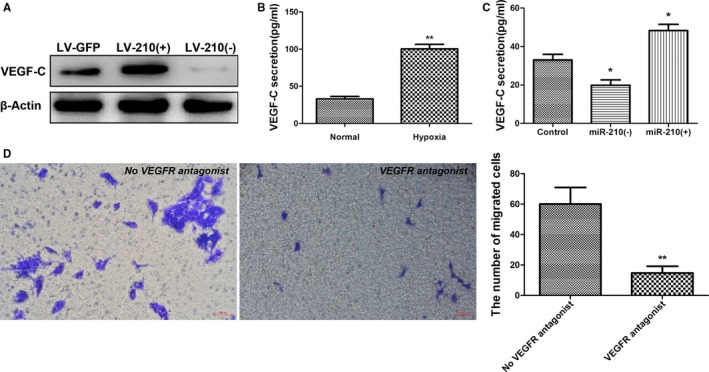Figure 6.

miR‐210 promotes VEGF‐C (vascular endothelial growth factor C) expression. A, The right striatum of the mice was injected with 3 μL of LV‐210(+) or LV‐210(−) or LV‐GFP, and the mice were used to establish the middle cerebral artery occlusion ischemia/reperfusion (I/R) model 14 days after injection. Brain tissues were collected from the ischemic side 7 days after I/R for examination of VEGF‐C expression using Western blotting. Compared with the control group, VEGF‐C protein expression was significantly increased in the miR‐210 overexpression group and decreased in the miR‐210 inhibition group. B, The level of VEGF‐C in the supernatant of endothelial progenitor cell (EPC) culture was determined via ELISA after 24 hours of culture under hypoxia. The secretion of VEGF‐C was significantly increased in the EPCs cultured under hypoxic conditions compared with the EPCs cultured under normal conditions (n=3, **P<0.01). C, The level of VEGF‐C in the supernatant of EPCs transfected with miR‐210 mimics or a miR‐210 inhibitor was determined by ELISA 48 hours after transfection. The secretion of VEGF‐C was significantly increased in the miR‐210 overexpression group and significantly decreased in the miR‐210 inhibition group compared with the control group (n=3, *P<0.05). D, The impact of VEGFR (vascular endothelial growth factor receptor) antagonists on the promotion of neural precursor cell (NPC) migration by EPCs was evaluated using a transwell assay. Compared with the untreated EPC group, the blockade of VEGFR significantly decreased the EPCs' effect in promoting NPC migration (n=3, **P<0.01).
